The mass media are funny in the way they deal with new technology. First it’s all “Wow, that’s Cool!”, then it’s “Ooh, that’s scary”, and finally it’s “BURN THE WITCH!”. Then a year or so later it’s part of normal life and they treat it as such. We’ve seen the same pattern repeated time and time again over the years.
![The mass media tech story cycle. Our apologies to Gartner. Curve image: Jeremykemp [ CC BY-SA 3.0 ], via Wikimedia Commons](https://hackadaycom.files.wordpress.com/2016/04/media-tech-cycle-800px1.png?w=499&h=339)
The latest piece of technology to feel the heat in this way is the multirotor. Popularly referred to as the drone, you will probably be most familiar with them as model-sized aircraft usually with four rotors. We have been fed a continuous stream of stories involving tales of near-misses between commercial aircraft and drones, and there is a subtext in the air that Something Must Be Done.
The catalyst for this piece is the recent story of a collision with a British Airways plane 1700ft over West London approaching London Heathrow. The ever-hyperbolic Daily Mail sets the tabloid tone for the story as a drone strike, while the BBC’s coverage is more measured and holds a handy list of links to near-miss reports from other recent incidents. This incident is notable in particular because a Government minister announced that it is now believed to have been caused by a plastic bag, and since there is already appropriate legislation there was little need for more. A rare piece of sense on a drone story from a politician. The multirotor community is awash with plastic bag jokes but this important twist did not seem to receive the same level of media attention as the original collision.
Are multirotors unfairly being given bad press? It certainly seems that way as the common thread among all the stories is a complete and utter lack of proof. But before we rush to their defence it’s worth taking a look at the recent stories and examining their credibility. After all if there really are a set of irresponsible owners flying into commercial aircraft then they should rightly be bought to book and it would do us no favours to defend them. So let’s examine each of those incident reports from that BBC story.
At this point, not being multirotor experts we did what every sane writer should when faced with that situation but few do. We sought someone with the expert knowledge to shed some light on the matter. A friend of Hackaday is a multirotor flier and builder of many years experience, and as we continue it is his input that informs the writing here.
Analyzing Incident Reports
So, that out of the way, on to the incident reports. These are proximity reports from the UK Airbrox Board, the body whose task is to apply any of the lessons that can be gleaned from any such incidents to air safety. They are all downloadable in PDF format.

Our first is Airprox Report No. 2015141. A Dornier 328 was above Hyde approaching Manchester Airport on the afternoon of 27th August 2015, at 2800 feet above sea level (about 1500 feet above local ground level) with a speed of 180 knots (207.141 mph). The drone was seen by the pilot, and was a royal blue trirotor, about 50cm in diameter.
As the report notes, this drone would certainly have been breaking the law by flying over the legal 400 feet, and the operator would almost certainly have been using an FPV camera. But let’s return to the report, at 50cm this is not a big machine. If it was a drone, its chances of carrying enough battery power to take it to 2800 feet while also both carrying and powering an FPV camera and transmitter could not be very high at all. Even at ground level these machines don’t have very long flight times, and climbing to that altitude is a power-hungry task. Remember that multirotors have propellers designed for efficiency in the thick air of ground level, and as they climb they have to work ever harder.
There is also the question of it being reported as a trirotor. This is not an unknown multirotor configuration, but such a machine is highly unusual in the UK. Unusual enough for anyone operating one to be noticed, we think.
![12 o'clock to 1 o'clock on a reciprocal track. Petr Adam Dohnálek [CC0] (Wikimedia)/Andreas 06 [PD] (Wikimedia)](https://hackadaycom.files.wordpress.com/2016/04/12-t0-1-path.png?w=250&h=250)
Reading this report, we find it difficult to understand how it could responsibly be attributed to a multirotor by any of the media outlets. This describes an aircraft capable of making an extremely tight turn (refer to this page about clock positions in aviation to appreciate this if our diagram isn’t enough) over an airliner traveling at nearly 300mph at 4000 feet (Stansted is a lot closer to sea level than the terrain surrounding Manchester). We’re not fast jet specialists here at Hackaday, but wouldn’t that kind of turn be impressive performance even for a military fighter? Disregarding all the stuff from our discussion of the previous report about the difficulty of a battery powered multirotor achieving that altitude, even in their wildest dreams a multirotor owner can’t make their machine perform like that!
![The UK Houses of Parliament. Mike Gimelfarb [Public domain], Wikimedia](https://hackadaycom.files.wordpress.com/2016/04/parliament_at_sunset.jpg?w=400&h=268)
A balloon-like drone would be an unusual machine, but while it may be out of the ordinary it is not an unknown configuration. The Festo machine we have just linked to for example was so unusual as to have received worldwide coverage when it was announced. But like the previous reports the problem we find with this report is the altitude. The power required to get a machine to 2000 feet and stay there without running out of juice and plummeting to earth would push the abilities of multirotor battery technology to the limit. If you notice in the Festo demonstration, it is all performed indoors, without weather or significant altitude.
The real kicker here though is the location. Over the UK Houses of Parliament. If you wanted to run an experiment in how quickly you could get a free ride in a British police car, we’d suggest you try flying an unexpected multirotor in this airspace. It is some of the most tightly-monitored space in the country, full of twitchy security people fueled by The War Against Terror, and one of very few places in the UK where you’ll see police officers carrying guns. Couldn’t it just be that the pilot in fact saw an escaped novelty helium balloon, not entirely impossible over one of the most populated parts of the country?

Next on the list is Airprox Report No. 2015162, a Boeing 777 over Datchet climbing out of London Heathrow at 2000 feet and with a speed not reported. We’d expect the aircraft to be under acceleration at this point, so it is likely that it would be moving at a similar speed to the earlier Stansted incident.
The 777 pilot described a quadcopter, about 12 to 18 inches in diameter, and with motors the size of Coke cans on each corner. The encounter was fleeting, only a very few seconds as the 777 was in a steep climb.
There are plenty of off-the-shelf quadcopters that are about 12 to 18 inches in diameter. Container loads of them arrive from China every day, and they would have delighted a million children when unwrapped on Christmas morning. But a couple of things bother us about this report. First there is the weight and power issue we’ve mentioned when discussing the previous reports. A machine that size would not be capable in our view of reaching 2000 feet under control with an FPV camera and staying there for any appreciable time and then returning under its own power. Batteries simply are not available which are light enough to both hold that amount of power and to enable them to do this. Our second concern though comes from those motors. There are large motors for multirotors, it is true. They have higher power output and correspondingly larger electrical power demands, and you might see them on much larger machines driving larger rotors. But would it make sense to fit them to such a small airframe? We just can’t see it. Our friendly expert’s comment on this report was that it sounded as though someone who had seen a picture of a multirotor but had never handled one was trying to describe what they thought one was.
Our next incident is Airprox Report No. 2015172, an Airbus 319 over Poyle on final approach to London Heathrow at 500 feet and 140 knots (161.110 mph) on the morning of the 30th of September 2015. The pilot reported a small drone-like helicopter hovering close to the centre line. He estimated that it passed within 20 to 30 feet of his aircraft.
Unlike the previous reports, this one does not stretch the possibilities of what a multirotor or model helicopter could achieve. A toy drone or helicopter might struggle, but there are enough more capable machines available. It is not at an altitude difficult to reach with a battery-powered aircraft, nor is it beyond the possibility of controlling such an aircraft from the ground. It also finds the Airbus at its point of most vulnerability, when as an aircraft approaching the runway it lacks both the airspeed and airspace to evade another craft or to recover itself in the event of an incident.
There is however one anomaly about this incident which we feel bears further investigation. A multirotor is a small and lightweight machine, and if it were to pass within 20 feet of an airliner at low altitude traveling at 160mph it is likely that it would experience significant turbulence. In simple terms, it would be knocked out of control by the wash of the passing high speed airliner, and there is a significant likelihood that it would not have been able to remain in the air. It is certain that an investigation would have immediately begun to find any wreckage of a crashed drone, yet none was found.

Our final case is Airprox Report No. 2015212, An Airbus A321 in the final stages of approach to Gatwick Airport in the early afternoon of the 28th of November 2015. The co-pilot reported seeing a stationary drone hovering at about 100 feet over the touchdown zone. The airliner passed underneath it and the co-pilot lost sight of the drone when he was at about 20 feet above ground level.
As with the previous report, this does not push the boundaries of multirotor flight. All but the most ineffectual drones should be capable of hovering at 100 feet above ground level, indeed since it is below the UK 400 foot altitude limit they could do so perfectly legally away from somewhere like Gatwick.
There is however a troubling side to the story that we would like to see an explanation for. Unlike all the other reports, this incident took place within the confines of an active and busy international airport. Airports are crawling with people doing a multitude of jobs, and yet nobody else saw the drone. The incident happened at 13:45 and the police were on the scene at 13:52, an astoundingly quick response for UK police, yet there was no drone. If you take a look at the Gatwick touchdown zone on Google Maps, you will see it is hardly close to the perimeter of the airport, to make a successful escape in that time the drone would have had to fly rather quickly, have an excessive amount of battery power, and somehow be invisible to everyone in the area surrounding the airport. We come back to our theoretical experiment in how quickly a drone pilot could get a free ride in a British police car, we strongly suspect the reality would be that any real drone pilot doing so at Gatwick would find themselves eating porridge in a very short time indeed. If this turns out not to be the case, shouldn’t questions be being raised about the airport’s security?
We Need Better Reports
It is very important to stress that flying a multirotor or any other kind of aircraft in proximity to a commercial airliner is a crime. It’s a particularly dangerous crime, and one which can have disastrous consequences in the event of a collision. We’d go further, and suggest that if anyone is found to have been doing it they should be locked up. Throw away the key, no collecting $200 or passing Go, all the clichés. It’s a crime, and any perpetrators should face all the consequences with maximum prejudice.
We are however concerned by the tone of all the reports listed above, both as they appear in the media and as they are reported in the official incident documentation. It is reported as indisputable fact that they are all multirotors being flown illegally, yet the only evidence presented are somewhat dubious eyewitness reports, either of extremely fleeting views of the craft in question or of craft that very obviously can not be electric hobby multirotors. At no point has anyone produced a real multirotor as evidence, in fact the only incident that featured a collision was found to be with a plastic bag. We feel that reporting these incidents in this way is irresponsible, and not consistent with the high standards we would expect from an aeronautical investigative body.
Unidentified objects in the air have been a feature of aviation since the first fliers took to the skies. They have been variously explained at different times as birds, weather balloons, secret Nazi weapons, Russian spies, or even alien invaders, but the common thread when you come down to it is that nobody has a clue what they really are. It seems that the current Flavour Of The Month when you have a sighting is to blame it on a drone, but that default identification seems about as meaningful in this context as it was when people were blaming aliens.
It was reassuring to hear the UK Government response that no new legislation was required, at least those of our community in the UK whose interests lie in multirotors will be spared hasty legislation driven by tabloid newspaper outrage like the disastrously ill-conceived Dangerous Dogs Act. But as we mentioned at the start of this piece, though we’ve used UK examples to illustrate here, this is not an issue confined to one country. If we want to keep our ability to fly it’s important that we expose any bogus truths behind drone panic stories wherever we find them, help bring to book any pilots we find breaking the rules we have at the moment, and continue to fly with care and consideration for other users of the airspace.
Filed under: Current Events, drone hacks, Featured, news, Original Art, slider
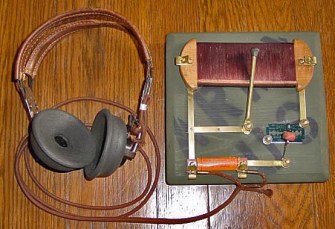
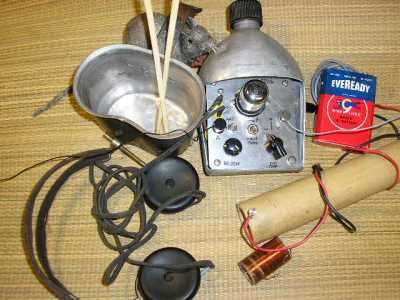
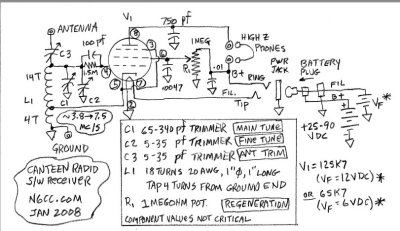
 The only components Wells couldn’t conjure out of thin air were the vacuum tube and the headset. Wells’
The only components Wells couldn’t conjure out of thin air were the vacuum tube and the headset. Wells’ 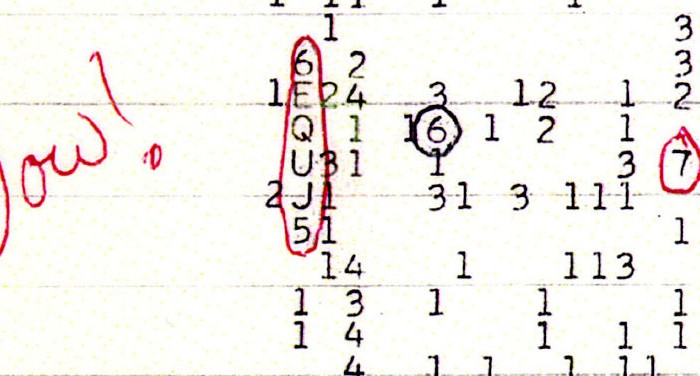

 “I would have never thought, as a 14-year-old kid building coils, that it was going to be useful someday” says Rice University chemist [Paul Cherukuri], who redesigned the classic Tesla coil to produce a stronger, more directed force field and built the research prototype. The team also found that their idea of self-assembly could be extended to little LED circuits, which apparently harvest energy from the coil’s field to light up the LEDs.
“I would have never thought, as a 14-year-old kid building coils, that it was going to be useful someday” says Rice University chemist [Paul Cherukuri], who redesigned the classic Tesla coil to produce a stronger, more directed force field and built the research prototype. The team also found that their idea of self-assembly could be extended to little LED circuits, which apparently harvest energy from the coil’s field to light up the LEDs.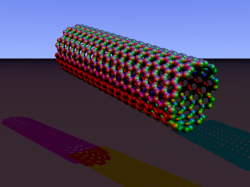







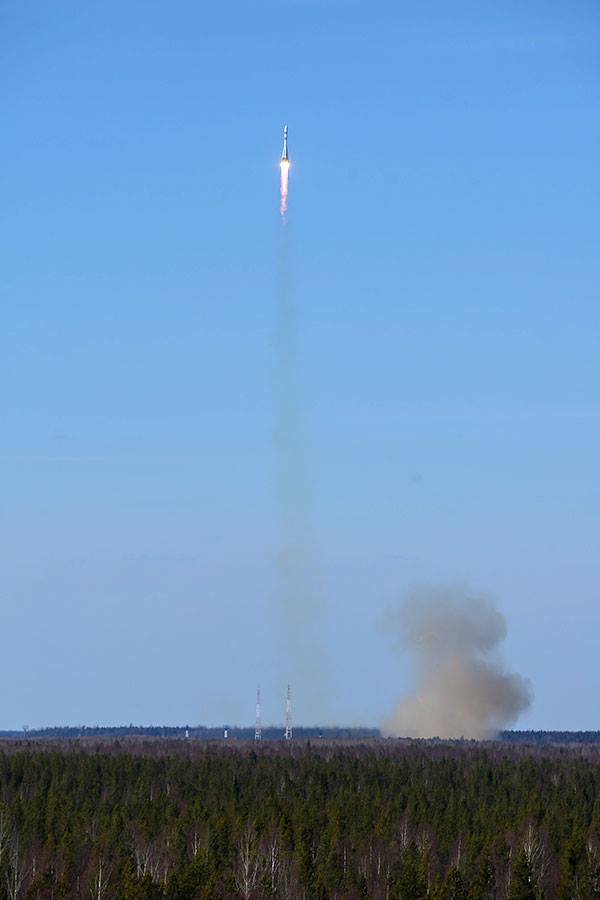

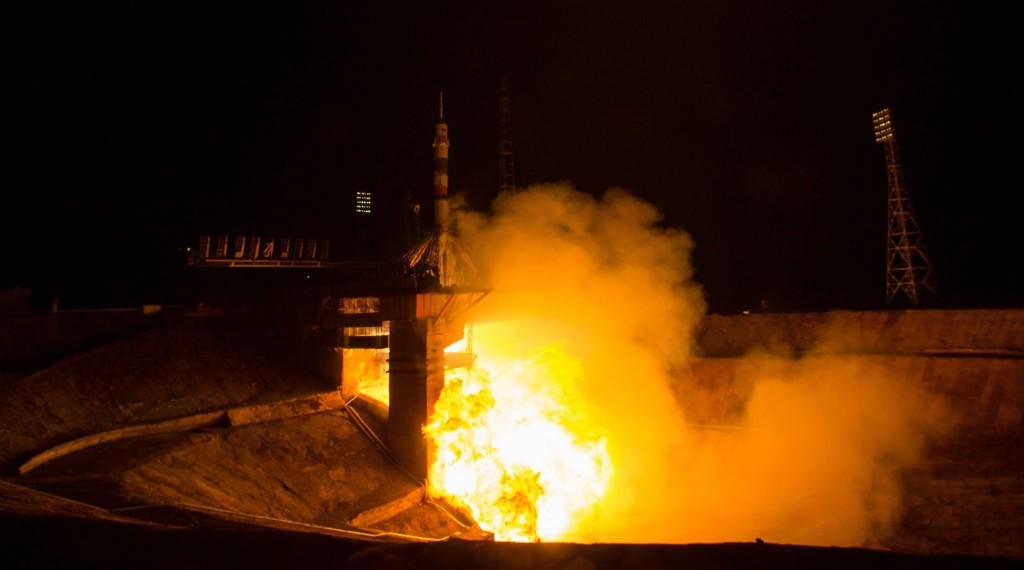













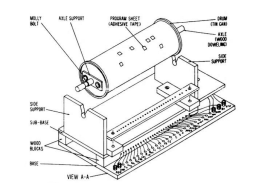
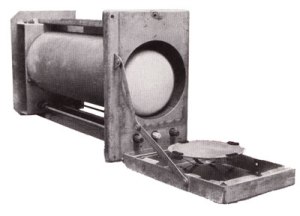
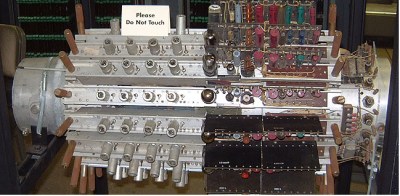

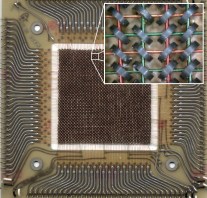





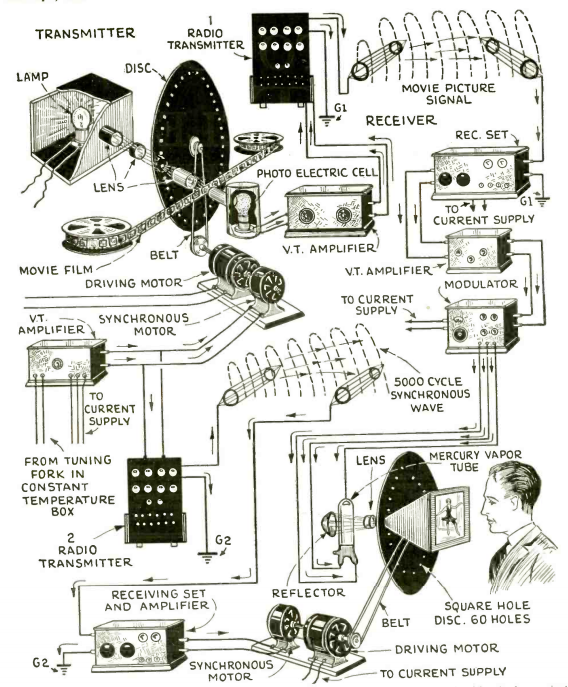

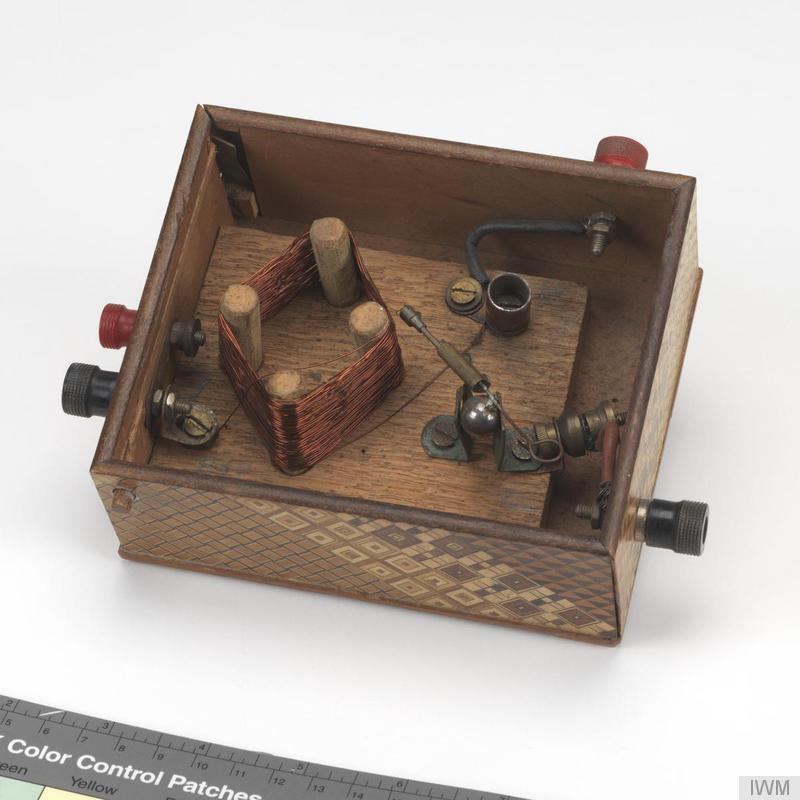
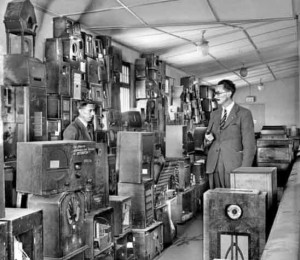


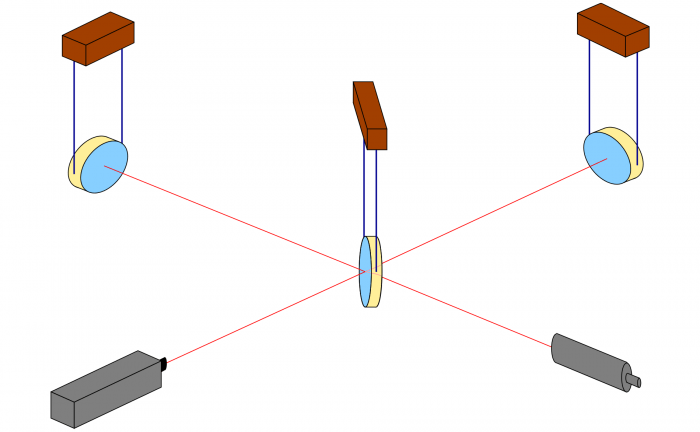
 The wave is moving at right angles to the screen, towards you. I've greatly exaggerated the distance changes. For a realistic wave, even the giant distance between the Earth and the Sun would only change by a fraction of the diameter of a hydrogen atom. Tiny changes indeed.
The wave is moving at right angles to the screen, towards you. I've greatly exaggerated the distance changes. For a realistic wave, even the giant distance between the Earth and the Sun would only change by a fraction of the diameter of a hydrogen atom. Tiny changes indeed. Every time a light pulse reaches the detector, an indicator light flashes yellow. The pulses are sent out regularly, they all travel at the same speed, hence they also reach the detector in regular intervals.If a gravitational wave passes through this system, again from the back and coming towards you, distances will change. Let us keep our camera trained on the detector, so the detector remains where it is. The changing distance to the light source, and also the changing distances between the light pulses, and some of the changes in distance between light pulses and detector or source, are due to the gravitational wave. Here is what that would look like (again, hugely exaggerated):
Every time a light pulse reaches the detector, an indicator light flashes yellow. The pulses are sent out regularly, they all travel at the same speed, hence they also reach the detector in regular intervals.If a gravitational wave passes through this system, again from the back and coming towards you, distances will change. Let us keep our camera trained on the detector, so the detector remains where it is. The changing distance to the light source, and also the changing distances between the light pulses, and some of the changes in distance between light pulses and detector or source, are due to the gravitational wave. Here is what that would look like (again, hugely exaggerated):  Keep your eye on the blinking light, and you will see that its blinking is not so regular any more. Sometimes, the light blinks faster, sometimes slower. This is an effect of the gravitational wave. An effect by which we can hope to detect the gravitational wave."We" in this case are the radio astronomers working on what are known as
Keep your eye on the blinking light, and you will see that its blinking is not so regular any more. Sometimes, the light blinks faster, sometimes slower. This is an effect of the gravitational wave. An effect by which we can hope to detect the gravitational wave."We" in this case are the radio astronomers working on what are known as 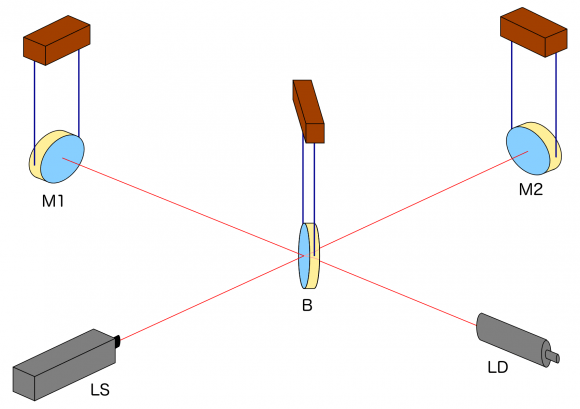 Light is sent into the detector from the (laser) light source LS to the beamsplitter B which, true to its name, sends half of the light on to the mirror M1 and lets the other half through to the mirror M2. At M1 and M2, respectively, the light is reflected back to the beam splitter. There, the light arriving from M1 (or M2) is split again, with half going towards the light detector LD, the other half back in the direction of the light source LS. We will ignore the latter half and pretend, for the sake of our simplified explanation, that all the light reaching B from M1 or M2 goes on to the light detector LD.(To avoid confusion, I will always refer to LD as the "light detector" and take the unqualified word "detector" to mean the whole setup.)This setup, by the way, is called a Michelson Interferometer. We'll see below why it is a good setup for gravitational wave detectors.In what follows, we will assume that the mirrors and the beam splitter, shown as being suspended, react to the gravitational wave in the same way freely floating particles would react. The key effects are between the mirrors and the beam splitter in what are called the two arms of the detector. Arm length is huge in today's detectors, running to a few kilometers. In comparison, light source and light detector are very close to the beamsplitter; changes of the distances between these three do not signify.
Light is sent into the detector from the (laser) light source LS to the beamsplitter B which, true to its name, sends half of the light on to the mirror M1 and lets the other half through to the mirror M2. At M1 and M2, respectively, the light is reflected back to the beam splitter. There, the light arriving from M1 (or M2) is split again, with half going towards the light detector LD, the other half back in the direction of the light source LS. We will ignore the latter half and pretend, for the sake of our simplified explanation, that all the light reaching B from M1 or M2 goes on to the light detector LD.(To avoid confusion, I will always refer to LD as the "light detector" and take the unqualified word "detector" to mean the whole setup.)This setup, by the way, is called a Michelson Interferometer. We'll see below why it is a good setup for gravitational wave detectors.In what follows, we will assume that the mirrors and the beam splitter, shown as being suspended, react to the gravitational wave in the same way freely floating particles would react. The key effects are between the mirrors and the beam splitter in what are called the two arms of the detector. Arm length is huge in today's detectors, running to a few kilometers. In comparison, light source and light detector are very close to the beamsplitter; changes of the distances between these three do not signify. Light source LS, the two mirrors M1 and M2, the beamsplitter B and the light detector LD: all present and accounted for.Next, we let the light source emit light pulses. For greater clarity, I will make two artificial and unrealistic changes. I will send red and green pulses into the detector, representing the light that goes into the horizontal and the vertical arm, respectively. In reality, there is no distinction, just light apportioned at the beamsplitter. Light running towards M1 will be offset a little to the left, light coming back from M1 to the right, for better clarity. Same goes for M2. This, too, is different in a real detector. That said, here come the light pulses:
Light source LS, the two mirrors M1 and M2, the beamsplitter B and the light detector LD: all present and accounted for.Next, we let the light source emit light pulses. For greater clarity, I will make two artificial and unrealistic changes. I will send red and green pulses into the detector, representing the light that goes into the horizontal and the vertical arm, respectively. In reality, there is no distinction, just light apportioned at the beamsplitter. Light running towards M1 will be offset a little to the left, light coming back from M1 to the right, for better clarity. Same goes for M2. This, too, is different in a real detector. That said, here come the light pulses:  Light starts at the light source to the left. Light that has left the source together, travels together (so green and red pulses are side by side) until the beam splitter. The beam splitter then sends the green pulses on their upward journey and lets the red pulses pass on their way towards the mirror on the right. All the particles that arrive back at the beamsplitter after reflection at M1 or M2. At the beamsplitter, they are directed towards the light detector at the bottom.In this setup, the horizontal arm is slightly longer than the vertical arm. Red particles have to cover some extra distance. That is why they arrive at the detector a bit later, and we get an alternating rhythm: green, red, green, red, with equal distances in between. This will become important later on.Here is a diagram, a kind of registration strip, which shows the arrival times for red and green pulses at the light detector (time is measured in "animation frames"):
Light starts at the light source to the left. Light that has left the source together, travels together (so green and red pulses are side by side) until the beam splitter. The beam splitter then sends the green pulses on their upward journey and lets the red pulses pass on their way towards the mirror on the right. All the particles that arrive back at the beamsplitter after reflection at M1 or M2. At the beamsplitter, they are directed towards the light detector at the bottom.In this setup, the horizontal arm is slightly longer than the vertical arm. Red particles have to cover some extra distance. That is why they arrive at the detector a bit later, and we get an alternating rhythm: green, red, green, red, with equal distances in between. This will become important later on.Here is a diagram, a kind of registration strip, which shows the arrival times for red and green pulses at the light detector (time is measured in "animation frames"):  The pattern is clear: red and green pulses arrive evenly spaced, one after the other.
The pattern is clear: red and green pulses arrive evenly spaced, one after the other. We have trained our camera on the beamsplitter (so in our image, the beamsplitter doesn't move). We ignore any slight changes in distance between beamsplitter and light source/light detector. Instead, we focus on the mirrors M1 and M2, which change their distance from the beamsplitter just as we would expect from the earlier animations.Look at the way the pulses arrive at our light detector: sometimes red and green are almost evenly spaced, sometimes they close together. That is caused by the gravitational wave. Without the wave, we had strict regularity.Here is the corresponding "registration strip" diagram. You can see that at some times, the light pulses of each color are closer together, at others, farther apart:
We have trained our camera on the beamsplitter (so in our image, the beamsplitter doesn't move). We ignore any slight changes in distance between beamsplitter and light source/light detector. Instead, we focus on the mirrors M1 and M2, which change their distance from the beamsplitter just as we would expect from the earlier animations.Look at the way the pulses arrive at our light detector: sometimes red and green are almost evenly spaced, sometimes they close together. That is caused by the gravitational wave. Without the wave, we had strict regularity.Here is the corresponding "registration strip" diagram. You can see that at some times, the light pulses of each color are closer together, at others, farther apart:  At the time I have marked with a hand-drawn arrow, red and green pulses arrive almost in unison!The pattern is markedly different from the scenario without a gravitational wave. Detect this change in the pattern, and you have detected the gravitational wave.
At the time I have marked with a hand-drawn arrow, red and green pulses arrive almost in unison!The pattern is markedly different from the scenario without a gravitational wave. Detect this change in the pattern, and you have detected the gravitational wave.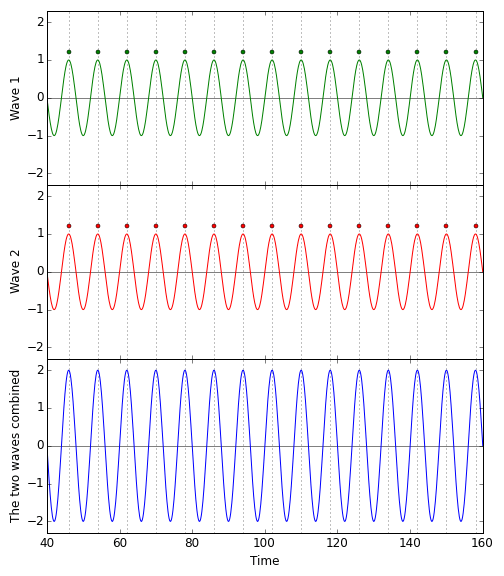 On top, the green wave, perfectly aligned with the red wave (which, for clarity, is shown directly below the green wave). Add the two waves up, and you will get the (markedly stronger) blue wave in the bottom panel.Not so if the two waves are maximally misaligned, the crests of each aligned with the troughs of the other. A crest and a trough cancel each other out. The sum of a wave and a maximally misaligned wave of equal strength is: no wave at all. Here is the corresponding diagram:
On top, the green wave, perfectly aligned with the red wave (which, for clarity, is shown directly below the green wave). Add the two waves up, and you will get the (markedly stronger) blue wave in the bottom panel.Not so if the two waves are maximally misaligned, the crests of each aligned with the troughs of the other. A crest and a trough cancel each other out. The sum of a wave and a maximally misaligned wave of equal strength is: no wave at all. Here is the corresponding diagram: 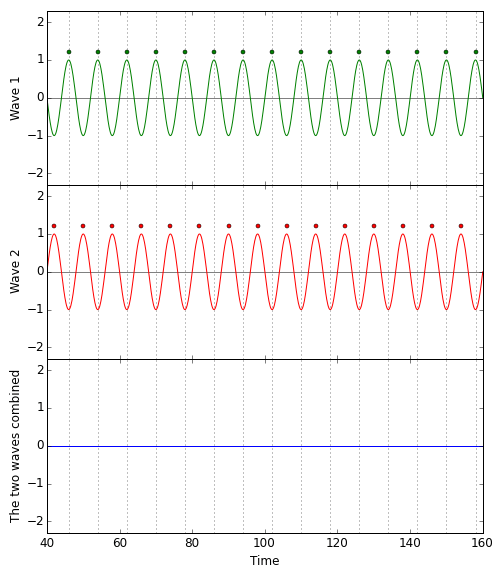 Recall that this was exactly the setup for our gravitational wave detector in the absence of gravitational waves: Red and green pulses with equal spacing; troughs of the one wave perfectly aligned with the crests of the other. The result: No light at the light detector. (For realistic gravitational wave detectors, that is almost true.)When a gravitational wave passes through the detector, the situation changes. Here is the corresponding pattern of pulse/wave crest arrival times for the animation above:
Recall that this was exactly the setup for our gravitational wave detector in the absence of gravitational waves: Red and green pulses with equal spacing; troughs of the one wave perfectly aligned with the crests of the other. The result: No light at the light detector. (For realistic gravitational wave detectors, that is almost true.)When a gravitational wave passes through the detector, the situation changes. Here is the corresponding pattern of pulse/wave crest arrival times for the animation above: 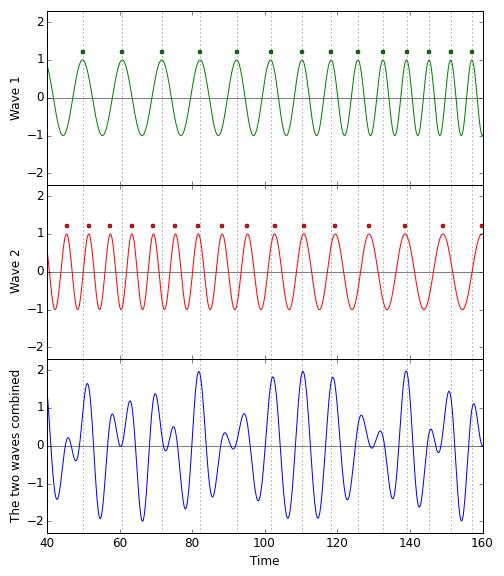 The blue pattern, which is the sum of the red and the green, is complex. But it is not a flat line. There is light at the light detector where there was no light before, and the cause of the change is the gravitational wave passing through.
The blue pattern, which is the sum of the red and the green, is complex. But it is not a flat line. There is light at the light detector where there was no light before, and the cause of the change is the gravitational wave passing through.




